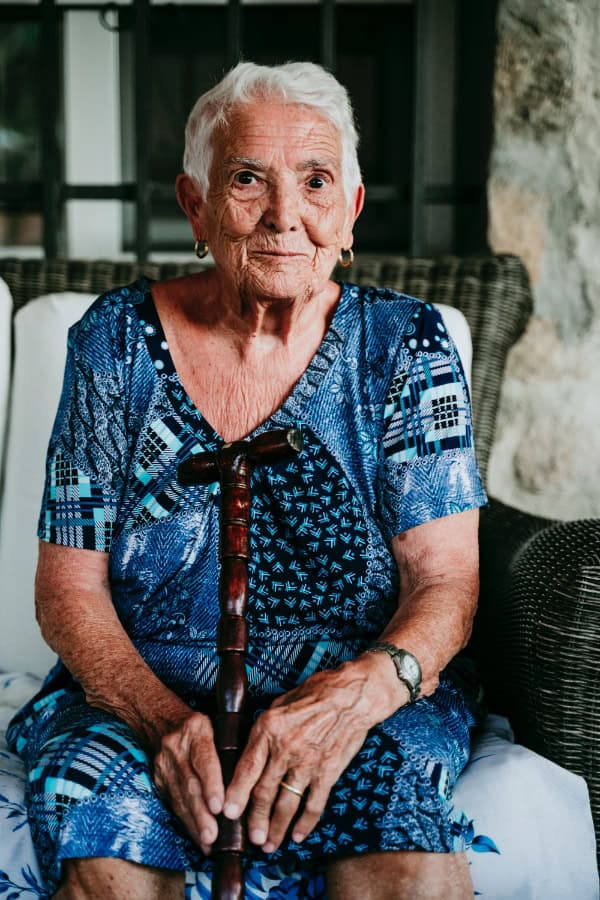Paying for Hospice Care: A Comprehensive Guide for Families
Care Services
Lick human with sandpaper tongue i cry and cry and cry unless you pet me, and then maybe i cry…















When your loved one is facing a serious illness, the last thing you want to worry about is how to pay for the compassionate care they deserve. Understanding hospice payment options can feel overwhelming during an already difficult time, but having clear information can help you make informed decisions and focus on what matters most – spending quality time with your family member.
At Serenity Palliative & Hospice Care, we believe that financial concerns should never be a barrier to accessing comfort care. This guide will walk you through the various payment options available for hospice services, helping you understand what’s covered and what resources are available to support your family during this journey.
Does Medicare Cover Hospice?
Yes, Medicare does cover hospice care, and this coverage is often more comprehensive than many families realize. Medicare Part A (hospital insurance) includes what’s called the “Medicare Hospice Benefit,” which has been available since 1983. This benefit was specifically designed to ensure that individuals with terminal illnesses can access comfort-focused care without facing financial hardship.
To qualify for the Medicare Hospice Benefit, your loved one must be eligible for Medicare Part A and have a terminal illness with a life expectancy of six months or less if the disease runs its normal course. Two physicians – typically your loved one’s attending physician and the hospice medical director – must certify this prognosis.
It’s important to understand that choosing hospice care under Medicare means your loved one will transition from curative treatment to comfort care. However, this doesn’t mean giving up hope or abandoning medical care entirely. Instead, it means focusing on quality of life, symptom management, and ensuring your loved one’s comfort and dignity.
What is Covered Under the Medicare Hospice Benefit?
The Medicare Hospice Benefit provides remarkably comprehensive coverage that extends far beyond what many families expect. Understanding what’s included can provide tremendous peace of mind during a challenging time.
Medical Services and Equipment: Medicare covers all medical services related to your loved one’s terminal diagnosis, including visits from physicians, nurses, and other healthcare professionals. This includes regular nursing visits, medical social worker services, and chaplain or counselor support. All necessary medical equipment and supplies – from hospital beds and wheelchairs to oxygen equipment and medications – are provided at no cost to your family.
Medications: Perhaps one of the most significant benefits is that Medicare covers all prescription medications related to your loved one’s terminal diagnosis and symptom management. This includes pain medications, anti-nausea drugs, and other comfort medications that might otherwise be expensive.
Therapies: Physical, occupational, and speech therapy services are covered when they’re aimed at symptom management and comfort rather than cure. These services can help maintain your loved one’s quality of life and independence for as long as possible.
Respite Care: Medicare recognizes that family caregivers need support too. The benefit includes up to five consecutive days of respite care, where your loved one can stay in a hospice facility or nursing home, giving family members a necessary break to rest and recharge.
Bereavement Support: Coverage extends beyond your loved one’s passing, providing grief counseling and support services for family members for up to one year after death.
What Is Not Covered Under the Medicare Hospice Benefit?
While Medicare’s hospice coverage is comprehensive, there are some limitations that families should understand. These exclusions are designed to maintain the focus on comfort care rather than curative treatment.
Curative Treatments: Medicare will not cover treatments intended to cure your loved one’s terminal illness once hospice care begins. This includes chemotherapy, radiation therapy, or major surgeries aimed at treating the underlying disease. However, if these treatments are being used for comfort rather than cure – for example, radiation to reduce pain from bone metastases – they may be covered.
Unrelated Medical Conditions: Medicare hospice benefits only cover care related to your loved one’s terminal diagnosis. Treatment for unrelated conditions – such as a broken arm or routine dental care – would be covered under regular Medicare benefits, not the hospice benefit.
Room and Board: Generally, Medicare doesn’t cover the cost of room and board in a hospice facility, nursing home, or assisted living facility. However, there are important exceptions during periods of crisis care or respite care.
Prescription Drugs for Unrelated Conditions: While all medications related to the terminal diagnosis are covered, prescriptions for unrelated conditions would fall under Medicare Part D coverage rather than the hospice benefit.
How Long Will Medicare Pay for Hospice Care?
One of the most common concerns families have is whether Medicare coverage will run out, leaving them responsible for expensive medical bills. The good news is that Medicare hospice coverage doesn’t have a lifetime limit or cap on the number of days.
Benefit Periods: Medicare hospice coverage is organized into benefit periods. The first period is 90 days, followed by a second 90-day period, and then unlimited 60-day periods thereafter. At the end of each period, your loved one’s physician and the hospice medical director must recertify that the terminal prognosis remains accurate.
Continued Coverage: If your loved one lives longer than six months – which happens more often than you might think – Medicare coverage continues as long as the physician certifies that the prognosis remains terminal. There’s no penalty for “outliving” the initial prognosis, and families shouldn’t feel guilty about continued care.
Reassessment Process: The recertification process isn’t meant to cut off benefits but rather to ensure that hospice care remains appropriate. Many patients continue to receive hospice care for months or even years under Medicare coverage.
Does Medicare Pay for Hospice in a Skilled Nursing Facility?
Yes, Medicare does cover hospice care in skilled nursing facilities, but the payment structure is somewhat complex and depends on why your loved one is in the facility.
Dual Coverage Scenarios: If your loved one is already a resident of a skilled nursing facility for reasons unrelated to their terminal diagnosis, Medicare will cover the hospice services while the family or other insurance continues to pay for room and board. The hospice team will work alongside the facility’s staff to provide specialized comfort care.
Hospice-Arranged Placement: If the hospice team determines that your loved one needs skilled nursing care specifically for their terminal condition, Medicare may cover both the hospice services and the skilled nursing facility costs. This typically occurs when medical needs exceed what can be safely provided at home.
Coordination of Care: When hospice and skilled nursing facility care are combined, the two teams work together to ensure seamless care. The hospice team maintains primary responsibility for the plan of care related to the terminal diagnosis, while the facility provides daily nursing care and support.
How Do You Pay for Hospice Care Without Medicare?
While Medicare is the primary payer for hospice services, families without Medicare coverage have several options available to access compassionate end-of-life care.
Private Insurance: Many private insurance plans, including employer-sponsored health insurance, cover hospice services. Coverage varies by plan, so it’s important to contact your insurance provider to understand specific benefits, copayments, and any pre-authorization requirements.
Medicaid Coverage: For families with limited income and resources, Medicaid provides comprehensive hospice coverage in most states. Medicaid hospice benefits are often similar to Medicare benefits, covering medical services, medications, equipment, and supplies related to the terminal diagnosis.
Veterans Affairs Benefits: Veterans may be eligible for hospice care through the VA healthcare system, which can provide services either at VA facilities or through community hospice programs.
Military Coverage
Military families have access to hospice care through TRICARE, which covers hospice services for eligible beneficiaries. TRICARE’s hospice benefit is comprehensive and includes many of the same services covered by Medicare.
TRICARE for Life: Military retirees with TRICARE for Life have dual coverage, with Medicare as the primary payer and TRICARE as secondary coverage, often resulting in little to no out-of-pocket costs for hospice care.
Active Duty and Family Members: Active duty service members and their families can access hospice care through military treatment facilities or civilian hospice programs, depending on availability and medical needs.
Self-Pay and Charity Care
For families without insurance coverage, hospice organizations often provide options to make care accessible and affordable.
Sliding Scale Fees: Many hospice organizations offer sliding scale payment plans based on family income and ability to pay. These programs ensure that financial limitations don’t prevent access to compassionate care.
Charity Care Programs: Most hospice organizations have charity care programs that provide free or significantly reduced-cost services for families who cannot afford to pay. These programs are often funded through community donations and fundraising efforts.
Payment Plans: Hospice organizations typically work with families to establish manageable payment plans that spread costs over time, making care more affordable for those paying out of pocket.
Can I Receive Hospice Services and Keep My Medicare Advantage Plan?
Yes, you can receive hospice services while enrolled in a Medicare Advantage plan, but there are important details to understand about how this works.
Automatic Reversion: When you elect hospice care under Medicare, the hospice-related services automatically revert to Original Medicare (Medicare Part A), even if you’re enrolled in a Medicare Advantage plan. This ensures you receive the full Medicare Hospice Benefit regardless of your Medicare Advantage plan’s specific coverage.
Continued Plan Benefits: You can keep your Medicare Advantage plan for all non-hospice related medical services. This means you’ll continue to receive benefits for unrelated medical conditions, prescription drugs not covered by the hospice benefit, and other healthcare services through your Medicare Advantage plan.
Coordination of Benefits: The hospice organization will work with both Medicare and your Medicare Advantage plan to ensure proper coordination of benefits and avoid any gaps in coverage.
Who Pays for the Hospice Room and Board?
The question of who pays for room and board in hospice facilities is often confusing for families, as the answer depends on several factors related to the level of care needed.
Home-Based Hospice: When hospice care is provided in your loved one’s home, there are typically no additional room and board costs. The hospice team provides all necessary medical equipment and supplies at no charge.
Hospice Facility Care: If your loved one needs to stay in a dedicated hospice facility, the cost structure depends on the reason for the stay. For short-term respite care (up to five days), Medicare covers the full cost including room and board. For longer stays required for symptom management or crisis care, Medicare also covers room and board costs.
Skilled Nursing Facilities: When hospice care is provided in a skilled nursing facility, families or other insurance typically remain responsible for room and board costs unless the placement is specifically for hospice-related medical needs.
Assisted Living: In assisted living facilities, families generally continue to pay room and board costs while Medicare covers the hospice services provided by the hospice team.
How Do I Pay for Hospice If I Don’t Have Insurance?
Not having insurance doesn’t mean you can’t access quality hospice care. There are several resources and programs specifically designed to help uninsured families during this difficult time.
Community-Based Programs: Many communities have programs funded by local organizations, churches, or foundations that help cover hospice costs for uninsured residents. These programs often have simple application processes and quick approval times.
Hospice Financial Assistance: Most hospice organizations have financial assistance programs that can significantly reduce or eliminate costs for qualifying families. These programs are often more generous than families expect and are designed to ensure that no one is denied care due to inability to pay.
Crowdfunding and Community Support: Many families have successfully used crowdfunding platforms to raise money for hospice care, often finding that friends, family, and even strangers are willing to contribute to help cover costs.
Negotiate Payment Plans: Hospice organizations are typically very willing to work with families to establish affordable payment plans. Many will accept small monthly payments or even defer payment until after other affairs are settled.
Seek Multiple Opinions: Different hospice organizations may have different financial assistance programs or payment options. It’s worth contacting several organizations to compare what assistance might be available.
At Serenity Palliative & Hospice Care, we believe that every family deserves access to compassionate end-of-life care, regardless of their financial situation. Our financial counselors are available to help you understand your options and find the best solution for your family’s needs. If you have questions about hospice care or need assistance navigating payment options, please don’t hesitate to reach out to our compassionate team. We’re here to support you and your loved one during this important journey.